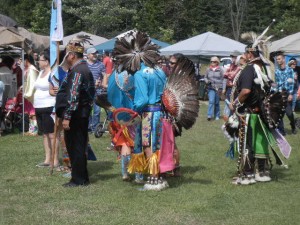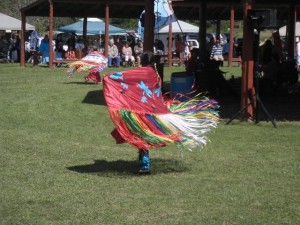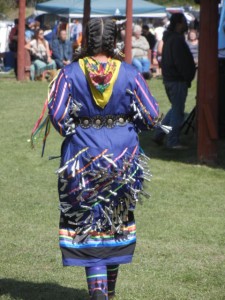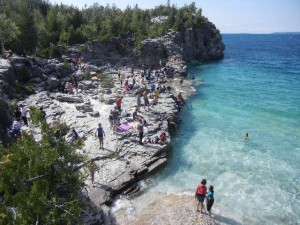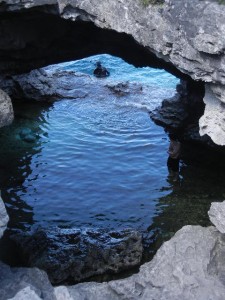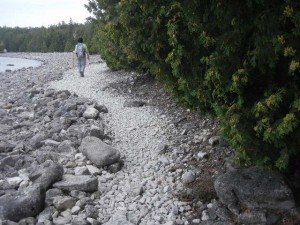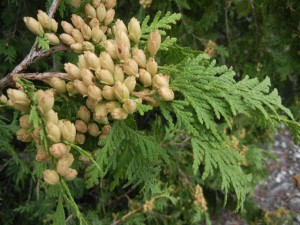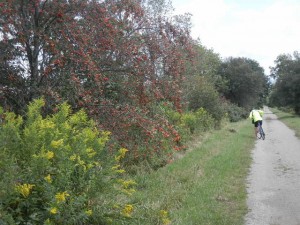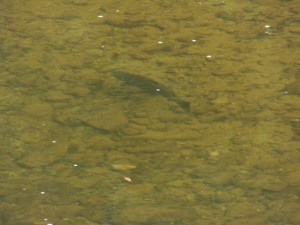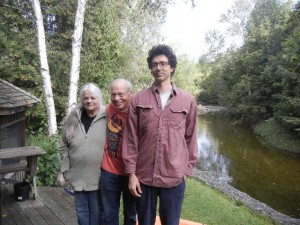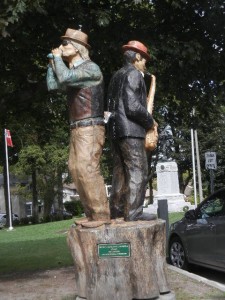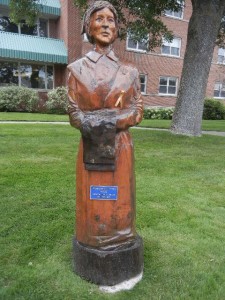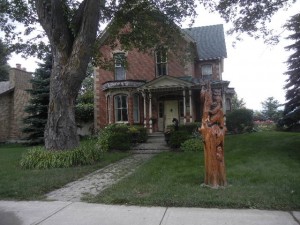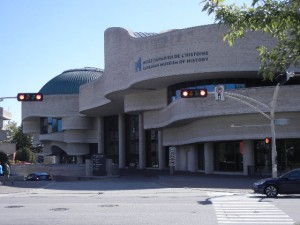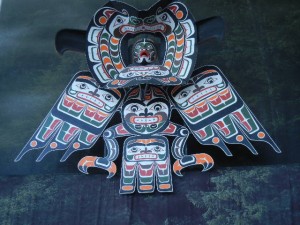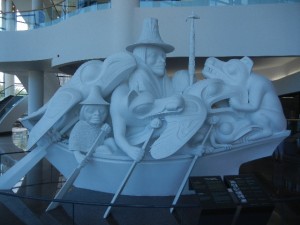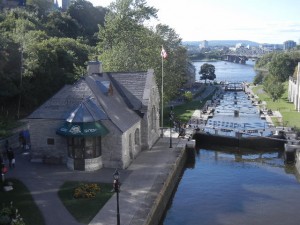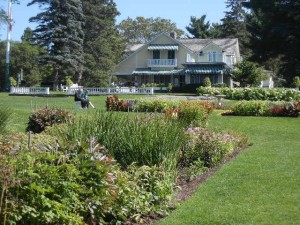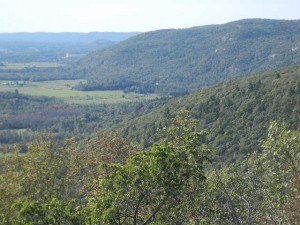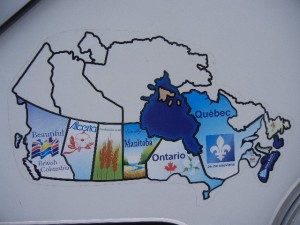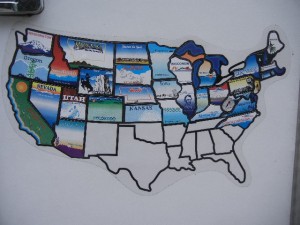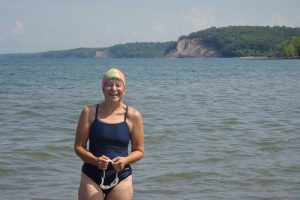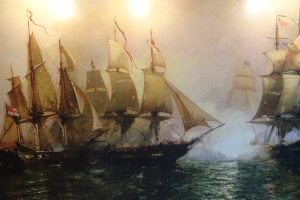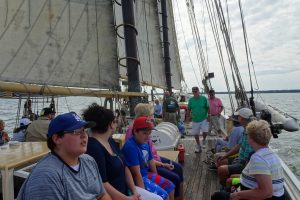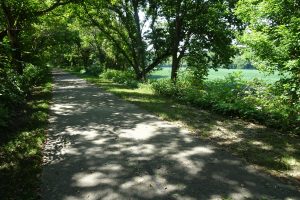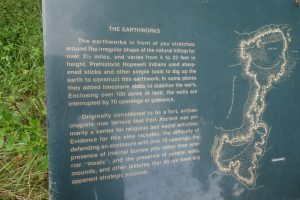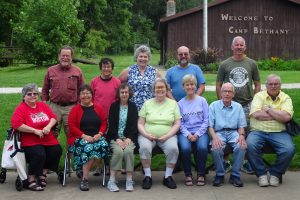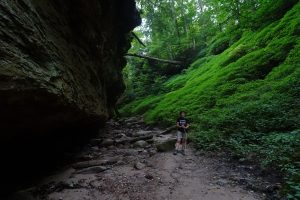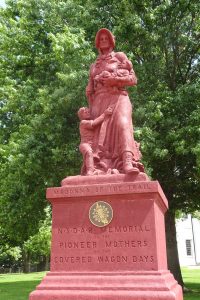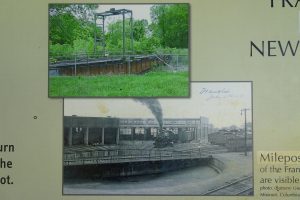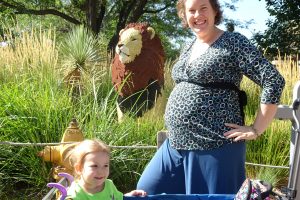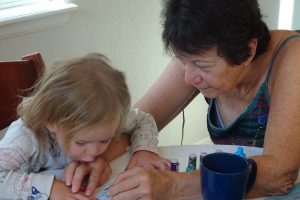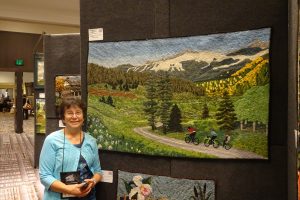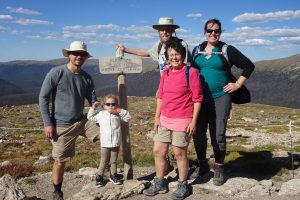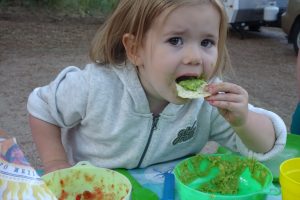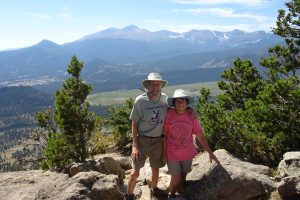2 September: The town of M’Chigeeng on Manitoulin Island was holding its annual Pow Wow on this day, so we went to see it. Ojibway account for a fairly large proportion of Manitoulin’s population. Along with allied tribes who speak related Algonquian languages, they have long been predominant in the northern Great Lakes region. They were one of the earlier tribes to acquire guns from Europeans, forced tribes such as the Sioux to move farther west, and successfully fended off their enemies the Iroquois from farther east. We had been traveling through the traditional land of the Ojibway (sometimes called Chippewa, especially in the U.S.) in Manitoba, Minnesota, Wisconsin, and upper Michigan on our way to Ontario.
The M’Chigeeng Pow Wow was something like a town fair, with booths selling food and handcrafted items. The focal event for the afternoon was an opening procession of dignitaries in ceremonial regalia followed by various groups of dancers, each to the accompaniment of drums and chanting. The dancers, including both genders and a wide range of ages, were dressed in traditional costumes and danced in a circle around the bandstand inside a wider circle of benches holding the spectators. The costumes were not limited to buckskins and eagle feather headdresses, but displayed a wide range of styles and colors. This was especially true for the women. In one dance they twirled around holding large colorful shawls. In another they wore “jingle dresses” hung with dozens of small bells (traditionally fashioned from pieces of tin cans rolled into a narrow cone shape). Although the Pow Wow does provide a show for tourists, more importantly it is a traditional way for the local community to gather together, keep some of their traditional customs alive, and honor those who have given significant local and national service. For lunch we bought a nish taco, which is a fried-dough “scone” topped with a hot tomato-based sauce, with typical taco toppings such as tomato, lettuce, meat, and cheese sprinkled on top (one was large enough for the both of us).